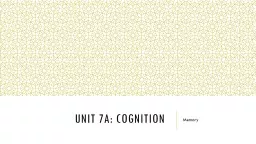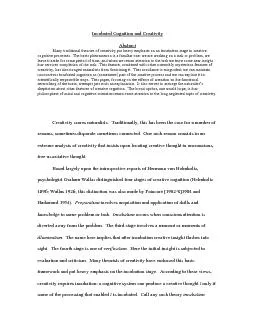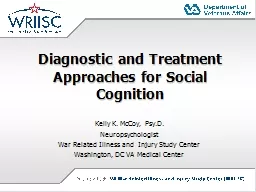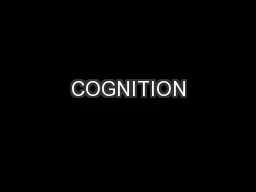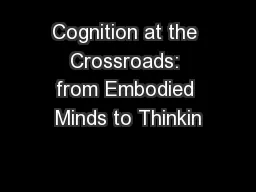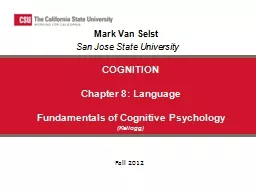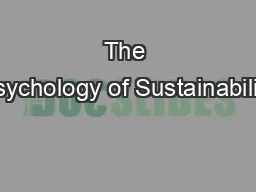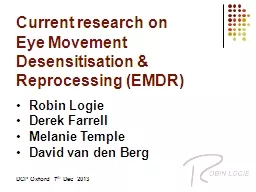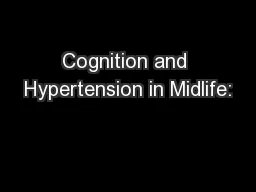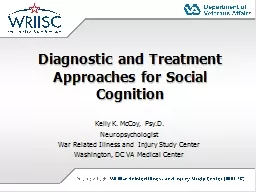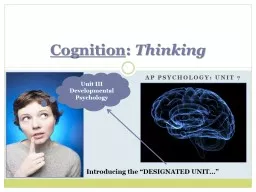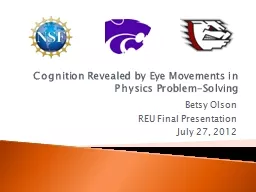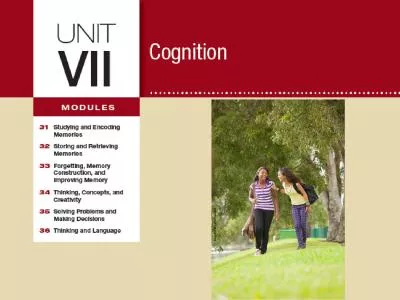PPT-Unit 7A: Cognition
Author : pamella-moone | Published Date : 2017-04-25
Memory Memory TEst Quick What is the last thing you can remember AKA What is your most recent memory Discuss Now try this What is the very first memory you can
Presentation Embed Code
Download Presentation
Download Presentation The PPT/PDF document "Unit 7A: Cognition" is the property of its rightful owner. Permission is granted to download and print the materials on this website for personal, non-commercial use only, and to display it on your personal computer provided you do not modify the materials and that you retain all copyright notices contained in the materials. By downloading content from our website, you accept the terms of this agreement.
Unit 7A: Cognition: Transcript
Memory Memory TEst Quick What is the last thing you can remember AKA What is your most recent memory Discuss Now try this What is the very first memory you can think of AKA What is your oldest memory Discuss. This theory is concerned with how information is propagated through a system in the form of representational states of mediating structures These structures include internal as well as external knowledge representations knowledge skills tools etc Th bumps on the head. We describe such ideas as ones that Kelly K. McCoy, Psy.D.. Neuropsychologist. War Related Illness and Injury Study Center. Washington, DC VA Medical Center. “Historically, it is often the physical manifestations of a brain disorder that are the first to be described in the scientific literature and to be clinically treated. Some decades later, the cognitive impairments are recognized. Yet, it is the emotional and behavioral changes that are the most significant barriers to effective functioning in family, in work, in school and in other settings.” (Judd, 1999). Cognition Questions. Do you have difficulty remembering or concentrating?. Split Interviews:. How often do you have difficulty remembering important things?. . Thinking about the last time you had difficulty remembering important things, how much difficulty did you have?. Michael Wheeler. . School of Arts and Humanities: . Philosophy. University of Stirling. Body Matters. One way of understanding the importance of embodiment “depicts the body as intrinsically special, and the details of a creature’s embodiment as a major and abiding constraint on the nature of its mind: a kind of new-wave body-centrism. The other depicts the body as just one element in a kind of equal-partners dance between brain, body and world, with the nature of the mind fixed by the overall balance thus achieved: a kind of extended functionalism (now with an even broader canvas for multiple realizability than ever before)” . Chapter . 8: Language. Fundamentals of Cognitive Psychology . (Kellogg). Fall . 2013. Mark Van Selst. San Jose State University. Cognition. Van Selst (Kellogg Chapter 8). Conceptual-Propositional Hypothesis. Deborah S. . Podwika. , M.A., C.S.M.. Kankakee Community College. Cognition. Acceptance. When a person finally chooses to believe the reality of a situation.. Research has shown that 99.99% of scientists accept the reality that humans are the cause of global warming instead of the previously thought 97%.. Eye . Movement Desensitisation & Reprocessing (EMDR. ). Robin Logie. Derek Farrell. Melanie Temple. David van den . Berg. DCP Oxford 7. th. Dec 2013. History of EMDR. Francine Shapiro. 1987 – walk in the park. Evidence . for Gene-Environment . Interplay. Terrie . Vasilopoulos. University . of . Chicago. Demography Workshop. 01/10/13. Cognitive. . performance across the lifespan. Hedden & Gabrieli (2004) . Kelly K. McCoy, Psy.D.. Neuropsychologist. War Related Illness and Injury Study Center. Washington, DC VA Medical Center. “Historically, it is often the physical manifestations of a brain disorder that are the first to be described in the scientific literature and to be clinically treated. Some decades later, the cognitive impairments are recognized. Yet, it is the emotional and behavioral changes that are the most significant barriers to effective functioning in family, in work, in school and in other settings.” (Judd, 1999). : . Thinking. Unit III Developmental Psychology. Introducing the “DESIGNATED UNIT…”. Marshmallow Challenge. What to . do:. Build the tallest freestanding structure:. the winning team is the one that has the tallest structure measured from the . Cognition Revealed by Eye Movements in Physics Problem-Solving Betsy Olson REU Final Presentation July 27, 2012 Motivation Theory Experimental Setup Results / Work to Come Limitations Discussion Acknowledgments Thinking, Concepts, and Creativity. Learning Targets. 34-1. Define . cognition. , . and describe the functions of concepts.. 34-2. . Discuss the factors associated with . creativity. , . and describe some ways of fostering creativity.. Leading TV Unit Manufacturer in Pune Innovative Designs, Superior Quality at Adeetya's Kitchen & Furniture https://adeetyas.com/tv-unit-manufacturers-in-pune.php
Download Document
Here is the link to download the presentation.
"Unit 7A: Cognition"The content belongs to its owner. You may download and print it for personal use, without modification, and keep all copyright notices. By downloading, you agree to these terms.
Related Documents

